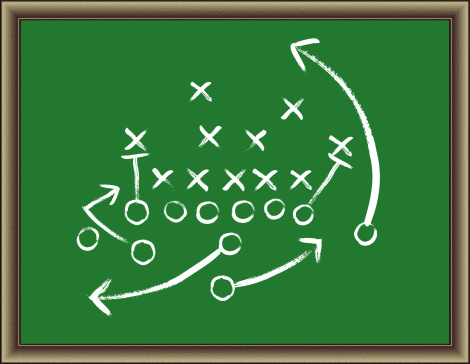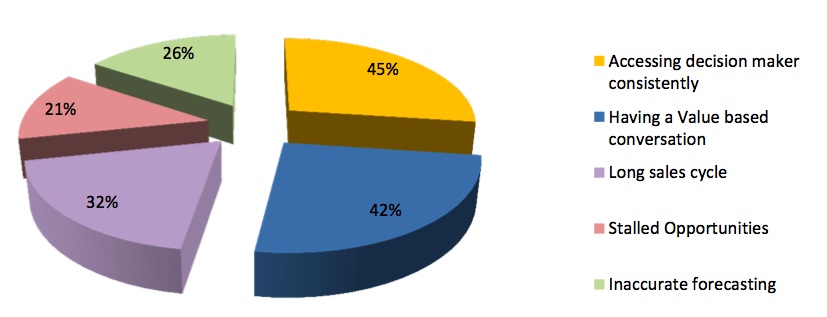As sales leaders, we all know that crafting a skilled, productive sales team is essential to our ultimate success; experts consider the keys to building a successful team a balance between art and science: a careful combination of skills, experience, education, and personality traits. New research, however, reinforces what we at ValueSelling Associates have long believed to be true: there’s a recipe for success we can all follow to develop a successful sales team.
 Of course, the right leadership goes a long way in shaping our teams, and a recent study from Software Advice supports that managers should seek to hire for certain fundamental skills, education, and experience. Following this recipe will yield success every time.
Of course, the right leadership goes a long way in shaping our teams, and a recent study from Software Advice supports that managers should seek to hire for certain fundamental skills, education, and experience. Following this recipe will yield success every time.
Education: Part of being a great salesperson is connecting with customers and knowing what they want. That means developing our writing, listening, and business acumen, all of which education can teach us. According to the study, 67% of sales industry employers involved in the study require candidates to have a degree in higher education, and the remaining 33% regard experience as an equal substitute to it.
Experience: Software Advice’s research indicates that 72% of employers look to hire folks with industry-specific sales experience. and if it’s technical or management experience, even better. We agree: the most successful sales professionals have a deep understanding of the customer’s business, that is built by working in the industry they serve.. Having knowledge and experience specific to customers’ needs and their industries enables us to better understand what specific issues they face, and how to best communicate with them. That experience translates to the ability to deliver and communicate customer-specific value.
Skills: At the end of the day, it is critical that the sales rep knows what to do, when to do it, and how to do it. Sales is a communication process that is based on a number of different skills. Education and experience are great to build upon, but they won’t suffice alone. Our sales teams need the right expertise and abilities to actively listen and manage an effective sales call and conversation. Negotiation and presentations skills are among those critical for sustainable success in the sales profession.
Sales Process: Once you have the key ingredients, it’s important that they are mixed and blended properly. Every world-class organization has a well-documented and defined sales process. Adherence to the sales process allows sales teams to leverage best practices, communicate with a common language, and productively allocate resources.
Building a world-class sales organization rarely happens by accident.



 Effective sales professionals have always been effective communicators. One way to communicate is through storytelling. We use well-crafted stories that build our credibility with prospects, and we capture not only their interest, but also their belief in our capabilities and our ability to relate to their world. Telling stories is a valuable way to connect with prospects and illustrate how our products or services can positively impact their business. We want to share stories that communicate our credibility and expertise in the field, whether they are in the form of an email, social media post, or webpage. Today, we not only need to be able to tell our stories in a conversation, we also need to be able to tell our stories online to capture the interest of our prospects.
Effective sales professionals have always been effective communicators. One way to communicate is through storytelling. We use well-crafted stories that build our credibility with prospects, and we capture not only their interest, but also their belief in our capabilities and our ability to relate to their world. Telling stories is a valuable way to connect with prospects and illustrate how our products or services can positively impact their business. We want to share stories that communicate our credibility and expertise in the field, whether they are in the form of an email, social media post, or webpage. Today, we not only need to be able to tell our stories in a conversation, we also need to be able to tell our stories online to capture the interest of our prospects. If we only understand sales, we’re just salespeople to our prospects and nothing more. We can’t just be experts in selling. We need to be experts in our customers’ industries, too. When we understand the overall industry, prospects’ business, and their specific issues, we become business experts. That’s the key to selling value, and that’s when a sale can start to happen.
If we only understand sales, we’re just salespeople to our prospects and nothing more. We can’t just be experts in selling. We need to be experts in our customers’ industries, too. When we understand the overall industry, prospects’ business, and their specific issues, we become business experts. That’s the key to selling value, and that’s when a sale can start to happen.
 Likewise, skilled sales professionals will diagnose a situation, and then demonstrate more value to their prospects through the questions they ask…not the answers they give.
Likewise, skilled sales professionals will diagnose a situation, and then demonstrate more value to their prospects through the questions they ask…not the answers they give. Today’s slangy emoji text culture may have you thinking that formally written communications are a lost art. Don’t believe it. When it comes to professional communications, poised and precise prose rules over the casually misspelled messages passing between colleagues.
Today’s slangy emoji text culture may have you thinking that formally written communications are a lost art. Don’t believe it. When it comes to professional communications, poised and precise prose rules over the casually misspelled messages passing between colleagues.

